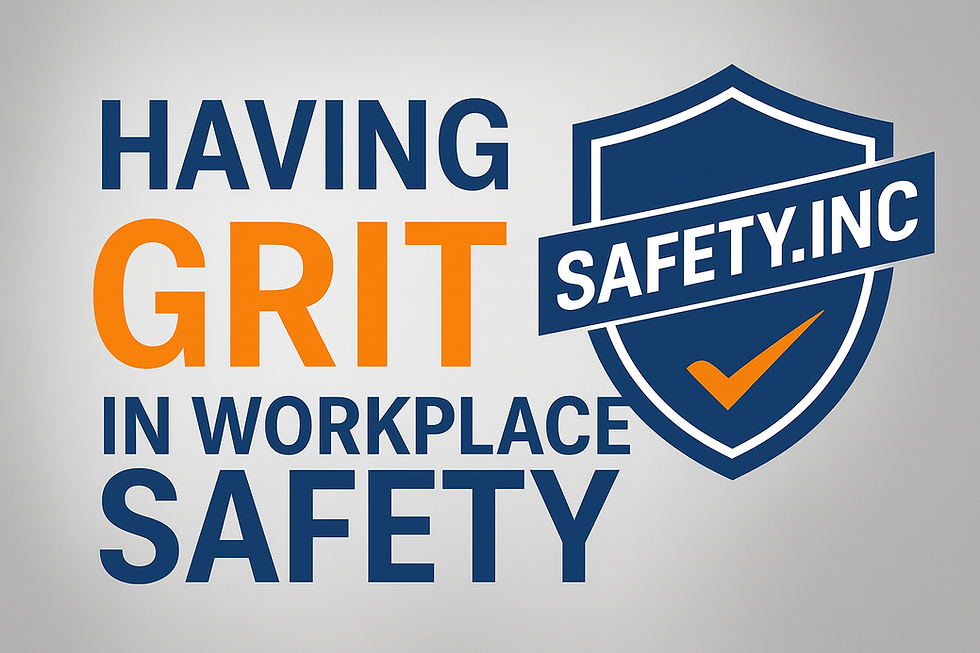Grit in Workplace Safety: Why Perseverance Matters More Than Ever
- Michael Matthew
- Sep 24, 2025
- 2 min read

When we talk about safety, we often focus on compliance, audits, and rules. But what about grit?
In psychology, grit is defined as perseverance and passion for long-term goals. In workplace safety, it’s the ability to stay committed, disciplined, and resilient—even when things get tough, repetitive, or inconvenient.
What Does Grit Look Like in Workplace Safety?
Grit in safety isn’t about dramatic heroics—it’s shown in small, consistent behaviors over time:
Speaking up repeatedly even when near-misses are ignored the first time.
Following procedures on the “easy” days as well as the high-risk days.
Leaders who model safe habits, even when they’re behind schedule.
Workers who refuse to take shortcuts, even when pressured to “get it done faster.”
Supervisors who coach, not just correct, because they believe in building a safety culture, not just policing it.
These moments demonstrate grit: sticking to safety principles because it’s the right thing to do, not just because someone is watching.
Why Grit Helps Reduce Incidents and Injuries
Workplace incidents often occur when complacency sets in. Grit works as the antidote. Here’s how:
Persistence Over Time – Instead of letting training fade, gritty employees refresh their knowledge and practice safe behaviors daily.
Resilience Under Pressure – When schedules tighten or production ramps up, grit keeps safety at the forefront rather than the first thing cut.
Cultural Ripple Effect – Grit inspires others. When leaders and peers see someone committed to safety despite obstacles, it raises the standard for everyone.
Preventing “Normalization of Risk” – Gritty teams don’t allow unsafe shortcuts to become “just the way we do things here.”
In short, grit builds a safety culture that lasts beyond compliance inspections.
The Ontario Context
Under Ontario’s Occupational Health and Safety Act (OHSA), employers are legally obligated to take every reasonable precaution to protect workers. But the Act can only go so far. True injury prevention depends on the grit of people at every level—from executives to front-line workers—who choose to uphold safety values day in and day out.
How Leaders Can Foster Grit in Safety
Model it visibly – Consistency matters more than one-off speeches.
Recognize persistence – Reward those who raise issues multiple times or who stick with new safety habits.
Frame safety as purpose, not just compliance – Remind employees that safety protects people, families, and futures.
Encourage resilience after incidents – Treat setbacks as opportunities to improve, not reasons to give up.
Final Thought
Grit won’t replace regulations, training, or systems. But without it, those tools are fragile. With grit, workplaces create a culture where safety is not just a policy—it’s a way of working.
Takeaway Questions for Readers:
How do you personally show grit in safety?
Where has your workplace let complacency erode safe habits?
What’s one action you could take today to model perseverance in safety?
👉 Call to Action:If you want to build more grit into your organization’s safety culture, let’s connect. At SAFETY.INC, we help Ontario businesses move beyond compliance toward resilience.




Comments